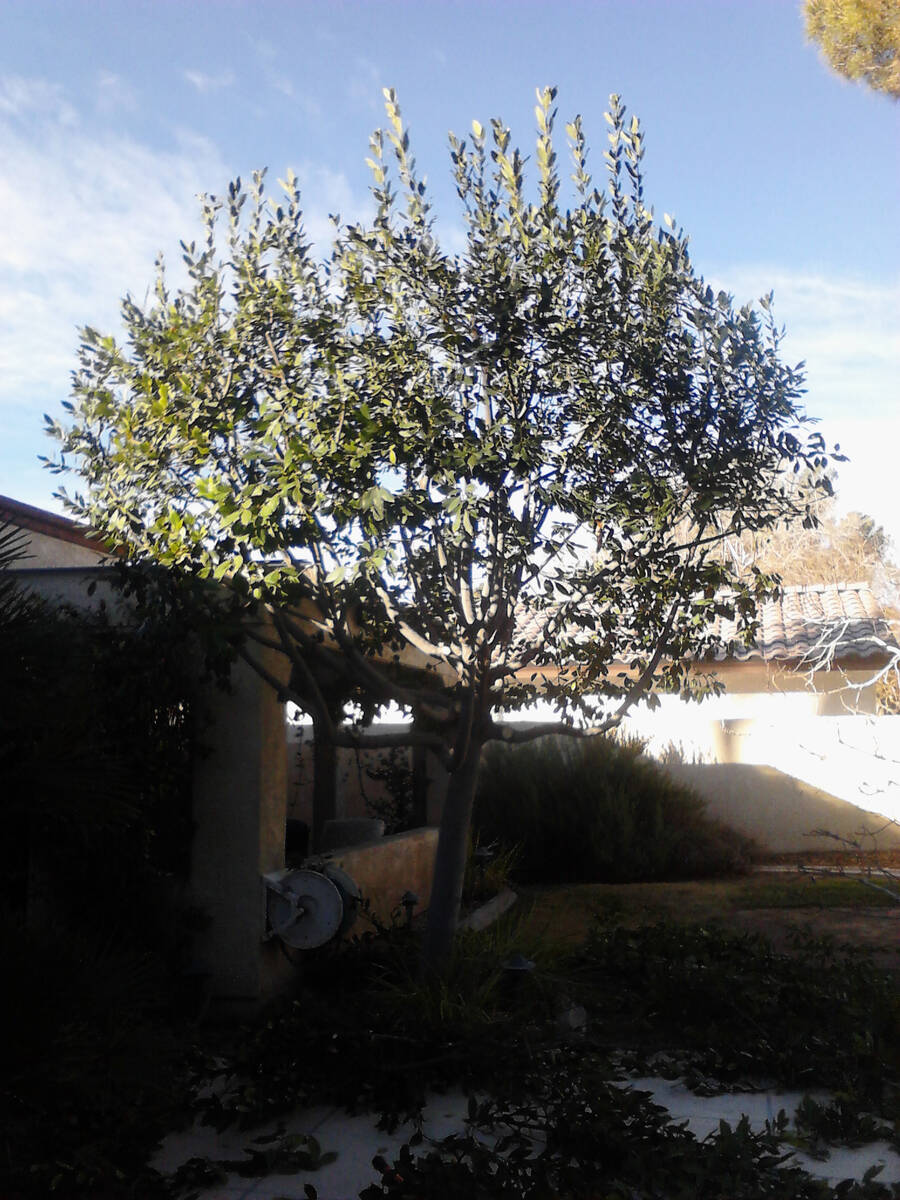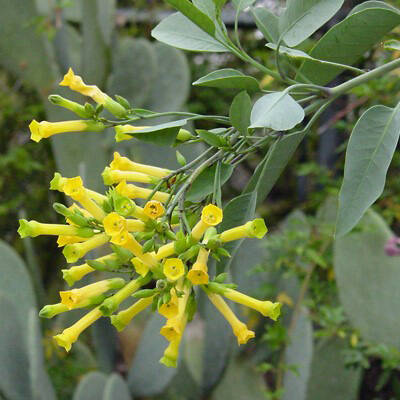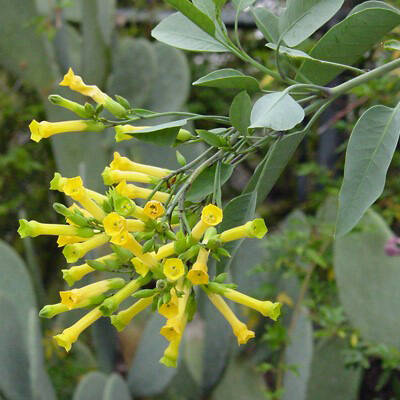Approved plants, art can replace nonfunctional grass
Q. I live in an HOA (homeowners association) property. I consider the rear yard next to my townhome contains “nonfunctional grass” as no one walks on or uses it. Where can I get a list of low-water-use plants and trees? I am sure with irrigation mandates we will do some conversions.
A. A major key when converting to a lower water use is to use as few plants of a larger size as possible. The fewer plants you use and still accomplish your goals, the better.
Start with your HOA. I am sure they have a list of approved plants for your property. If they don’t include plants you want, then appeal this list with plants you feel should be included along with justification from an authority. Be respectful, not demanding.
Plants used in important locations should withstand a minimum winter temperature of 20 F to 23 F. If we get a winter cold snap, you might be replacing plants that freeze or at least waiting for them to fill out and shade again.
Most importantly, shade the south- or west-facing exterior walls and windows (shading the roof is not as important) with deciduous, appropriately sized plants to reduce the heat load during summer months. Space plants apart between three-fourths of their mature size or equal their mature height. It will take three or four years before you benefit from this placement. Don’t plant closer than 3 feet from walls and buildings to keep water damage to the foundation at a minimum.
Use artwork and outside structures instead of plants. They don’t use water and still provide shade.
As far as plants to use, start with the Southern Nevada Water Authority’s searchable plant database that focuses on plants suitable for the Las Vegas Valley. Another plant database I use quite a bit is Chris Martin’s at Arizona State University in Tempe. Just remember, when using this database that our temperatures are 5-7 degrees colder than Tempe.
Q. Sweet bay trees border our property on all four sides totaling about 35. They are now about 15 feet tall with 5-inch trunks. We have lost trees in the past from underwatering. How many gallons of water should each of these trees receive on the winter watering day?
A. You may know Dale Devitt from the University of Nevada, Las Vegas, and I published many articles on water use in numerous research journals. Plants are extremely variable in water use depending on their type, size, where they are planted and how they are grown. We published a book on irrigation of trees; it is available on Amazon.
You will get many different responses on plant water use depending on who you talk to. However, we do know this: The more trees present, the more water is needed and the bigger the tree is, typically the more water it uses. Conversely the way to reduce water use is to plant fewer plants, use open spaces in creative ways that don’t require water and use desert trees that mature into a smaller size.
To roughly estimate tree water use, assume trees are divided into three categories: very low water use (e.g., foothill palo verde), medium water use (e.g., vitex and bay laurel), and high water use (e.g., mulberry and poplars). Moderate water use means it uses from 2-4 feet of water (applied under its canopy) each very year.
I recommend applying water to at least half the area under its canopy every year. When water is applied each time, apply it so that the soil becomes wet to a depth of 18-24 inches. If water is applied to half the area under a bay laurel tree (20 feet tall) so that half of this area is wet, one tree will require from 9,000-10,000 gallons of water each year. The same area covered by a lawn requires about double that.
Q. I am losing portions of my pine trees at my home. All 10 were planted from “live” Christmas trees we bought in the past, either Mondale or Aleppo type. Out of the 10 trees, three are starting to show complete limbs that are dying. I trimmed some dead out of one tree this week and saw numerous small holes on it, so I hit it on the cement and this worm-type bug fell out. What is this creature and how did it arrive? Is it causing the damage I see in my trees? And finally, how do I get rid of them before they kill all my pines?
A. Pines are not a preferred tree of flatheaded borers. Flatheaded borers are a problem in many plants but usually not pines. Most of the time in heavy-sap producers, like plum and apricot trees, the sap floods an area damaged by insects and “suffocates” invaders like these flatheaded borers. I am not sure if it’s an old tale or not, but I understand that sap that oozes from the damaged branches is first cloudy because of insect feeding, and then becomes translucent as the invader or borer is overwhelmed by the sap and dies.
My guess is that these trees had limbs stressed because of a drought problem and these stressed limbs attracted borers. So first make sure that water is being delivered to an area equal to about half the area under their canopy. Next, when water is applied be sure it reaches a soil depth of about 3 feet to satisfy any drought condition they might be experiencing.
Remember pine trees, just like fig trees and palms, like to have their “tootsies” in water. The trees don’t have to be growing in it, but they like to access it during the hot season, even if the water is deep. They don’t like to be surrounded by a dry desert soil.
I don’t think borers are totally responsible for branch death, but finished them off when the trees became stressed.
What to do? Make sure at least half the area under the tree is getting watered. Plant other deep-rooted plants under the tree to deliver water to a wider area. Make sure applications of water are to at least 3 feet. Use a 4-foot-long piece of rebar after an irrigation to judge how deep the water is getting in the soil. Apply a soil drench of borer control insecticides to kill existing borers in the branches. Apply it in May after the tree finishes flowering.
Q. I’ve seen mixed comments regarding purple hopseed bushes being toxic to animals. Do you happen to know if they are or not? Any help would be appreciated.
A. Keep in mind that about 60 percent to 70 percent of all landscape plants are poisonous in one way or another. Toxicity depends on the dose given. I have never considered hopseed a poisonous plant. I checked with another source of information that I consider reliable and he does not recognize it as poisonous, which agrees with my original assessment.
Because my source does not consider this plant toxic and the fact that it was previously used by indigenous peoples as a health remedy, I don’t consider it a “poisonous” landscape plant if eaten in moderation. It’s not as toxic as oleander, tree tobacco or yellow oleander for instance, which have been grown here by backyard gardeners.
Q. We have decided to have our Mexican fan palms removed. Do we need to have all the roots removed or just cut the palms down to the ground, especially the one next to the pool?
A. If your palm trees do not sucker from the base (date palm and Mediterranean fan palm do produce suckers from the base), then as soon as the top is cut off, the palm will die. Both Mexican and California fan palms have one central bud at the top, which is the only place where new growth can occur. Once cut and they die, they will slowly decay if left behind.
The problem you will have when you leave any kind of stump is the palm trees’ slow decay rate. Coir is taken from coconut palms and is used in soil mixes to build structure because it resists decay. Its slow decay is the main reason I discourage its use in compost piles or wood chip mulch. It makes a great semipermanent component in soil mixes. In both cases you want fertilizer or compost added to circumvent its slow decay. When plants decay, they add to the organic content of the soil and help make it darker.
Remove as much of your palm trunk as possible. The palm roots won’t regrow, but any debris left behind from the trunk will decay. If you decide to use it in your new soil mix, chop it as small as possible and make sure that fertilizer or compost is added to the soil to compensate for the slow breakdown of palm debris.
Bob Morris is a horticulture expert and professor emeritus of the University of Nevada, Las Vegas. Visit his blog at xtremehorticulture.blogspot.com. Send questions to Extremehort@aol.com.














